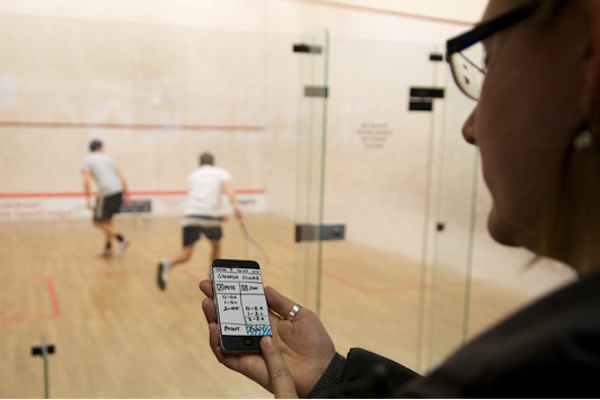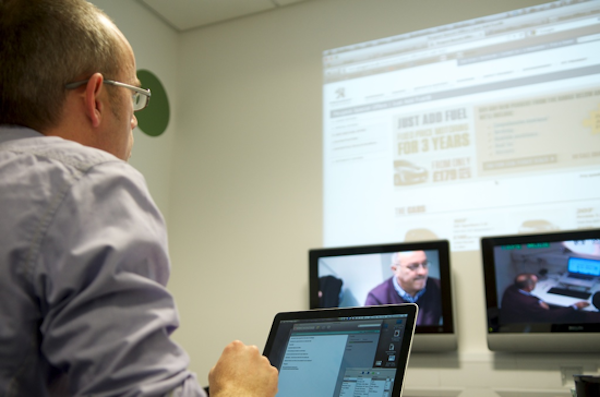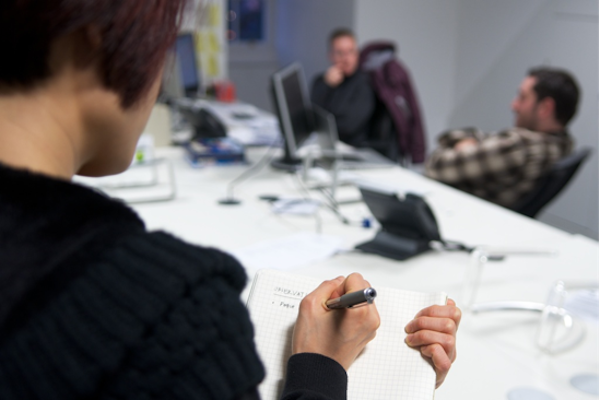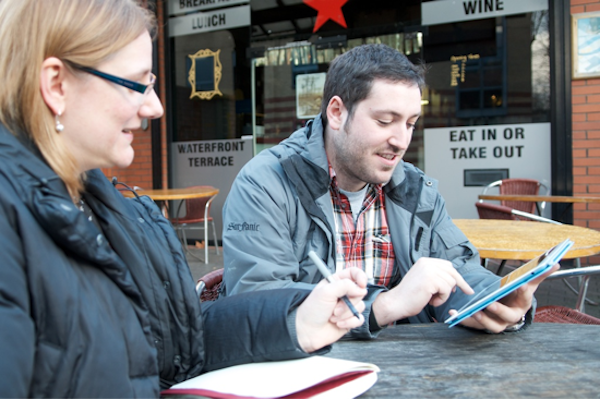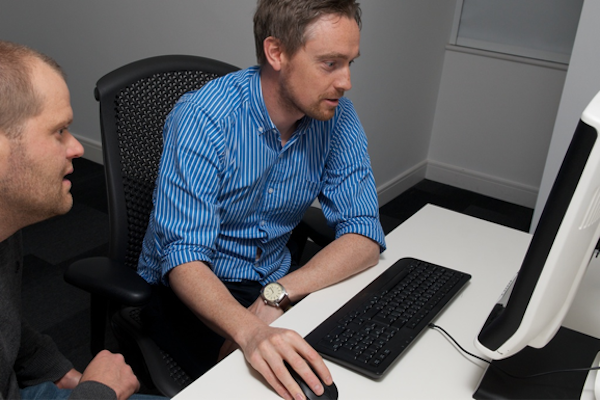Conducting user research in the lab is convenient isn’t it? You get everything set up, order the coffee and sandwiches, and off you go.
You learn some good stuff, your client sees everything, and everyone has a lovely time.
But I think we all know lab research isn’t really representative of real life and that bugs me. I think it’s time we get out of the lab and into the real world.
In fact, my experiences on a recent research project have left me thinking that I would happily never conduct lab-based research again.
What Led to this Epiphany?
I was asked to design a research project for a client whose customers have an average age of 85. They also have limited mobility and are geographically dispersed. There was no way our team could get them to into the lab, so what in the hell were we going to do?
The obvious solution was to visit them in their homes, but this threw up all sorts of logistical challenges, the likes of which we rarely face within the controlled environment of a usability lab.
I had no option. I had to organize a series of home visits and take a different approach. Reflecting back now, I see that I had lots of (misguided) preconceptions of how problematic this approach would be, but as you’ll see it’s much easier than you might think.
Why Take Your Research Outside of the Lab?
Field or “contextual” research methods give you a fascinating insight into how people live their lives. You see things that you could never see in a lab.
You see how and where people use their devices. You get to see the cheat-sheets, shortcuts, and workarounds that people employ to make things work for them. You get to understand the environments within which people are buying your products or using your services, and the types of equipment they are using to do so.
You quickly learn there is no average user with an average computer. The diversity of environments that people use their devices in will blow your mind. The amount of things that compete for people’s attention will shock you (in one house I noted: “washing machine beeping, TV on, radio on, husband singing, dog barking, postman knocking, dishwasher beeping, phone vibrating, and neighbor peering through window”).
You get to see things first-hand (so you can ask questions about what you are seeing) within a real-world environment. Best of all it’s easy to do and you don’t need any fancy kit. Here are some tips to help you start using it on your next research project.
When designing a squash scoring app it makes sense to test it in the environment where it will be used
Take Your Client with You
My client accompanied me to every one of the sessions; in fact she helped out. This allowed her to make genuine connections with her customers and witness the problems they were having. This helped her to prioritize which issues to fix because she understood the problems they were causing.
Of course, your client may not always be able to join you, or there may be too many people who want to come along. In this situation you can always hold a few sessions in the lab and a few in the field. Just be flexible to suit your own particular project constraints.
Don’t Sweat it if You Can’t Record What Happens
I had originally planned to record video and to take photos, but after the practice session that we held at a customer’s house close to our office, we abandoned the idea.
The diversity of environments that people use their devices in will blow your mind
Despite having been given permission to take photos, our test participant seemed very uncomfortable at the prospect of a stranger taking photos in his home, so I packed my camera away. The last thing I wanted to do was to make someone feel uneasy, as the whole point of this approach is to keep things as natural as possible.
Given that my client was with me, the recording was less important in this instance but as long as you take good notes you should be fine. If your client can’t come, you can still record sessions fairly unobtrusively with a small video camera, or a colleague can take notes for you. Just consider whether recording in someone’s home feels appropriate and follow your gut.
Clients can still observe home-based research but will probably need to be more hands on than usual
You Can Still Learn a Lot in Just One Day
I had anticipated getting to two, maybe three testing sessions in a day as opposed to the six we can usually complete in the lab. Surprisingly, we found that in the field we could easily do four and could have done more if the schedule required it.
All you need is some careful planning and a good map reader and you’ll be amazed at how many you can fit in. Don’t forget that you save on lab hire costs, too, so this approach might actually be more cost effective for your client.
Embrace The Chaos of Real Life
Chaos is a good! We saw some amazing things, like customers who had viruses that were manipulating the display of my client’s website, massive crashes, and add-to-basket buttons obscured by browser add-ons—all great to see!
Don’t forget, your shiny new lab machine with its super fast Internet connection is probably not representative of real life. If the user’s kit breaks, you are seeing real life problems that the user faces everyday.
If you keep it simple you can be flexible, just making observations and taking notes can be very effective
Write Down What Worries You and Make a Plan to Avoid It
After an early career as a paperboy I’ve had many encounters with rabid dogs and as a result am a big fan of cats. You need to anticipate whether there may be any dangers and mitigate them. Make sure you always conduct this kind of research with another person for your own safety.
Common sense and some carefully worded questions in the recruitment screener will help to mitigate potential problems. People are generally respectful of visitors and will act accordingly. We found that people with dogs just locked them in another room while we were there.
I avoided potential problems by phoning everyone beforehand to introduce myself and explain what we were planning to do. During this call I also went over practicalities such as Internet connections, computers, available space in their computer room, and their availability on the research days just to iron out any potential headaches.
The Recruitment Process is Very Similar to Lab Testing
Recruitment worked as it would for a lab study, we just had to make sure people were comfortable with us to coming into their homes. Our recruiter screened out anyone who wouldn’t fit the brief and made sure that those who did fully understood our intentions.
Be Mindful if You Are Going into People’s Homes
I was really worried about this, particularly as we were visiting a particularly old and vulnerable group of people. You just have to remember that you are visiting someone’s home, and to take your shoes off and be nice.
We made an effort to get to know each other before we got started, which helped to put everyone at ease and made subsequent conversations easier as we could contextualize things based on what we’d already learned about that person.
The Real World Is So Much More Interesting Than Your Research Facility
Conducting lab research can sometimes feel like an endurance test. I recently observed nine usability tests in one day. After five of them everyone in the observation room looked like they needed a holiday. The facilitator was a shadow of his former self by the end of it.
The joy of getting out and about is that each place you visit is different. As a facilitator, you just don’t suffer the same burnout as you can in the lab. It’s more interesting and you don’t know what to expect. It keeps you on your toes and is genuinely more enjoyable.
Cafes are a classic hangout for opportunist researchers!
Get Out into the Real World on Your Next Project
You should go where people are using your digital products, be it at home, work, on the train, or sitting on the beach. It is much easier than I thought it would be and it taught me things I could never have learned in the lab.
It is by no means a perfect method—I would have liked to involve more clients and overall it took longer to conduct testing than it does in the lab—but I know the benefits far outweighed these issues. Some of my concerns about using the approach were justified but none of these became fundamental problems that I couldn’t work around.
You can also ease yourself into using field research methods by employing a mix of techniques on your next research project. You could combine home visits with lab tests, remote tests, and even guerilla tests. Do whatever you feel comfortable with within the constraints of your own project.
Remember, the lab is not the real world!
Give it a go on your next research project and I’ll wager that you may never find yourself using a lab again!
I’d like to thank Talia Findlay for the project that was the inspiration for this article.


